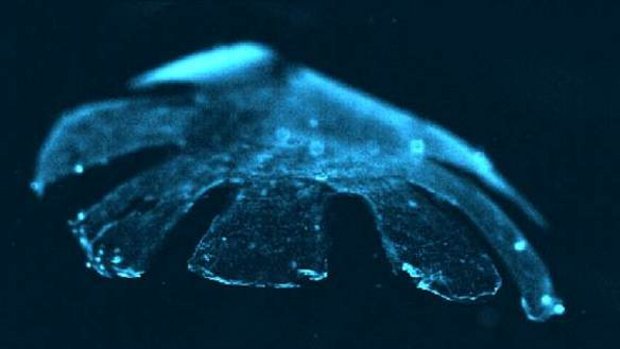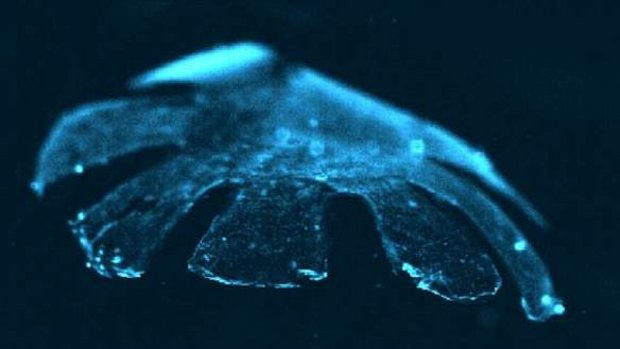Bioengineered Jellyfish
A biomimetic hybrid jellyfish grown from rat cells and silicone furthers heart research


Scientists at Harvard and Caltech recently announced they had engineered a hybrid jellyfish. This jellyfish was built from rat cells and silicon rubber, and moves just like a regular jellyfish when placed in electrified water. And to what end has this semi-living organism been created? To further the developed of heart medicine!
Using tissue culturing techniques (recently seen in creating a bioengineered football) the scientists grew heart muscle cells on an asterix shaped silicon membrane. The membrane was made from a mould of a baby jellyfish, and measured just 9mm in diameter. Heart muscles respond to voltages, as anyone who has witnessed a defibrillator in action. When this bioengineered beast (AKA a 'medusoid') is placed inside an electrified vessel of water, it pulsates in the exact way as a jellyfish (see the video above).
If this were a bioart project we'd be stunned, but to learn this will further heart medicine is just jaw dropping. Lead researcher Kit Parker explains that the motion of a jellyfish is remarkably similar to how a heart contracts and pumps blood. The medusoids motion is predictable when the 1 hz electrical current electrifies the water. It will be possible to test the effects of heart drugs on pumping rates by observing the jellyfish's movement rates in response to the medicine.
The research is an amazing intersection of tissue culturing, soft robotics and biomimicry. Tissue culturing has been around for a while, but here it is applied to the area of soft robotics. Soft robots act in a predictable and automated manner, but without the need for electrical wiring. Imitating nature's design (biomimicry) is a major source of inspiration for many scientific fields, the researchers plan to build biomimetic octopus next! We can only marvel at what further salt water soft robots will emerge from synethetic biology.




Discussion